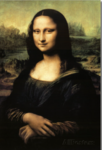Hi Pat,
I don't know about anyone else, but I'm not clear what the images of Ms. Monroe and Yoda - lovely as they are in their respective ways - have to do with art? Is it that the original posters of the actress and the Jedi master are now collectors items? If so, may I offer this broad rule of thumb as to what is and isn't art . . .
It's fair to say that a work of art is nearly always a one-off bespoke item, of which painting or sculpture are the most obvious examples.
Says who? The artist who does the poster for copy, magazines, brochures and including cars and bikes and anything else that is mass produced does it with the intent of making it artistic, stylish, elegant and beautiful.
The raison d'être is restricted to the work itself; it exists in its own right, independently of anything else and for no other purpose than to be what it is. It doesn't do anything - it has no function - so it's not a utilitarian object such as a bowl or teapot. And it doesn't sell anything - other than itself. Does have a function. To be looked at. Otherwise what is the purpose of the creation... Function of art is to be looked at and admired. Your definitions so very narrow.
The notable exception Many more exceptions to that I reckon. Handbags, shoes, suits, hats. Jimi Hendrix's guitar no doubt mass produced. that proves the one-off rule are limited edition photographs, lithographs, etchings, screen prints and, to a lesser extent, cast sculptures. The point to note about all of these is in the description; the edition is limited in size and each print or sculpture is numbered in order to identify it as part of the edition. None of the above applies to mass produced marketing material, such as the London Transport posters mentioned earlier or the two images you've attached above. Sure, all of these can be 'artistic', visually striking and contactable in the eyes of many people. But their appeal is merely a by-product of what they were originally produced for and intended to do. Namely, to put bums on seats in trains and cinemas. If you accept the definition I've provided here, that means they are not art.
Tim.








